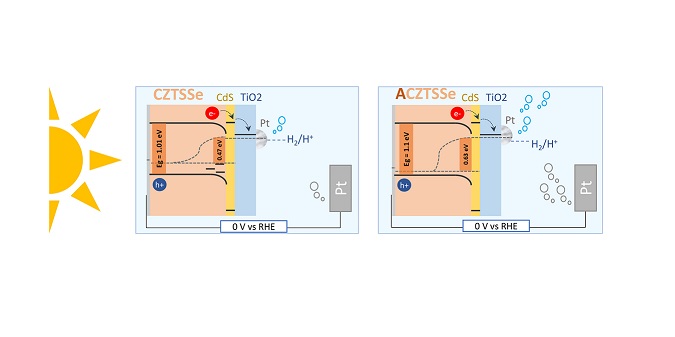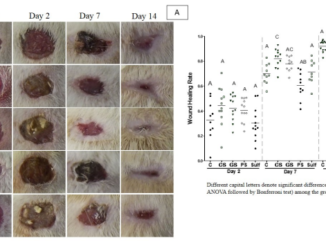
Vanquishing CZTSSe deep defects to enhance photoelectrocatalytic water splitting
Abstract: Cu2ZnSn(S,Se)4 (CZTSSe) is a promising material as a photocathode for photoelectrochemical (PEC) water splitting because it is inexpensive and composed of earth-abundant elements. However, it has a high density of deep defects, such as CuZn and ZnCu antisites, which is pointed out as the main cause of band tailing and low onset potential-based PEC devices. By substituting 10% of Cu+ by Ag+, the onset potential shifts positively from 0.2 to 0.4 VRHE, the photocurrent is almost three-folded, and solar-to-hydrogen efficiency is 6 times higher than that for the Ag-free photocathode. Absolute intensity photoluminescence (AIPL) in different light intensities was used to demonstrate that the Ag-substitution vanquishes the Cu/Zn-related defects. The quasi-Fermi level splitting (QFLS) values are obtained fitting the Katahara-modified model of the Planck Law, and the curve QFLS versus light intensity provides the quasi-Fermi Level pinning. The low QFLS pinning for CZTSSe indicates midgap states act as recombination centers, which are detrimental to the photocathode. The increased QFLS pinning for ACZTSSe evidence that Ag-partial substitution vanquishes the Cuzn-related defects, decreasing recombination, enhancing the charge carriers transport, and consequently, improving the hydrogen production.
Author(s): Araujo, M. S.; Sousa dos Santos, H. L.; Medina, M.; Salomao, A. C.; Mascaro, L. H.; Andrade Junior, M. A. S.
Electrochimica Acta
Published: 1 October 2023, Volume 464, 142935
DOI: https://doi.org/10.1016/j.electacta.2023.142935
CDMF
The CDMF, hosted at the Federal University of São Carlos (UFSCar), is one of the Research, Innovation and Dissemination Centers (RIDC) supported by the São Paulo State Research Support Foundation (Fapesp), and also receives investment from the National Council Scientific and Technological Development (CNPq), from the National Institute of Science and Technology of Materials in Nanotechnology (INCTMN).




